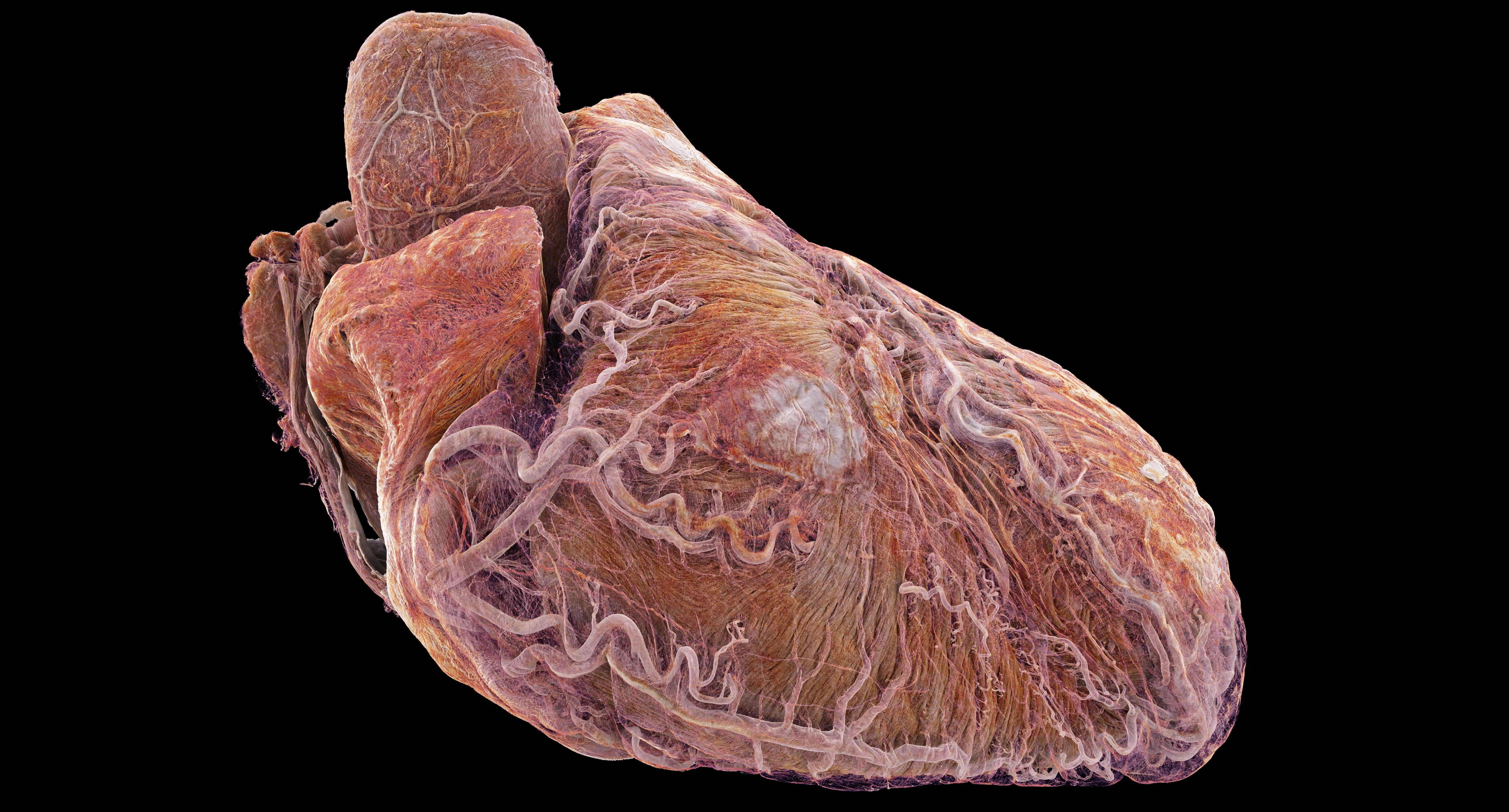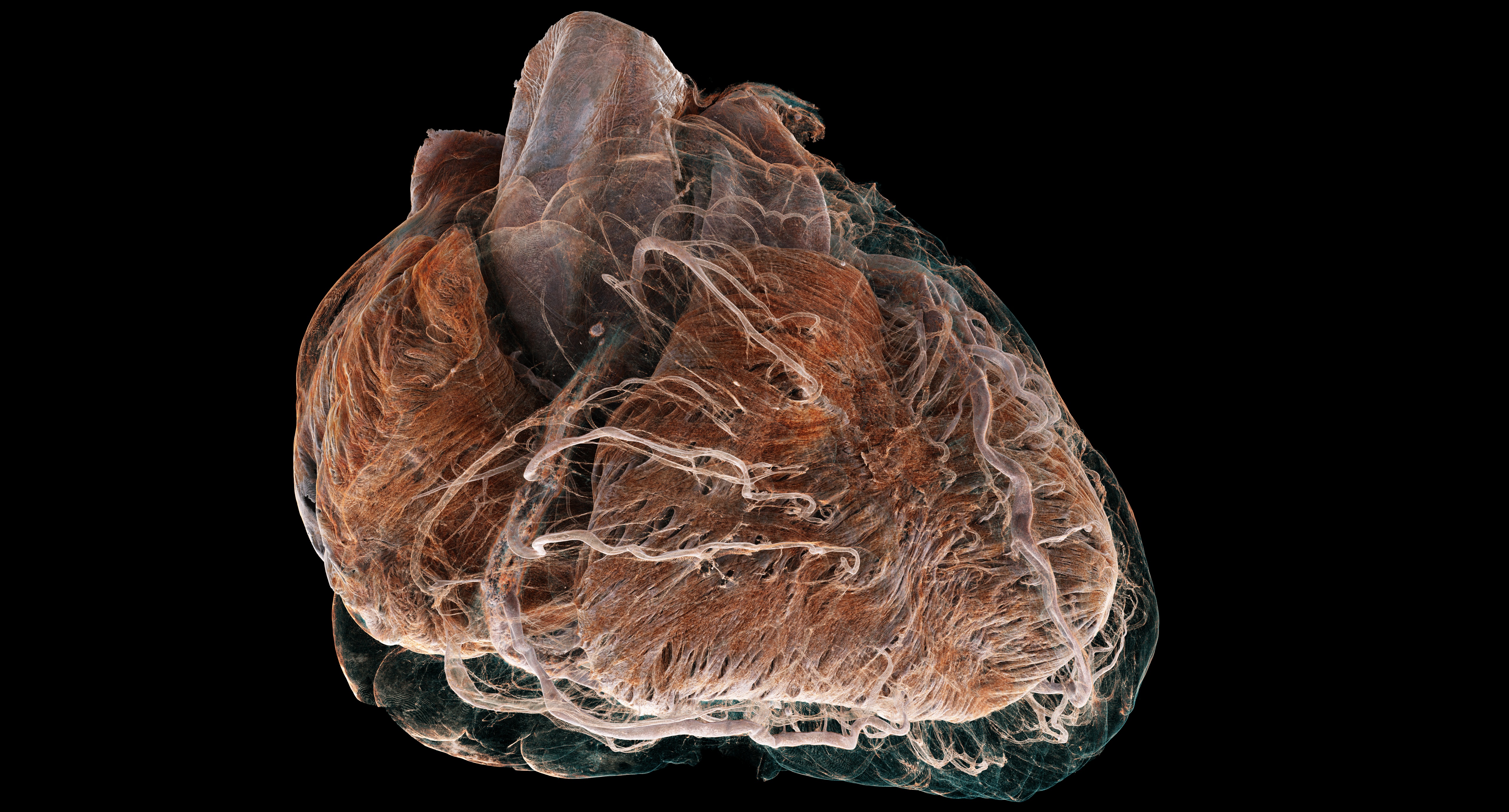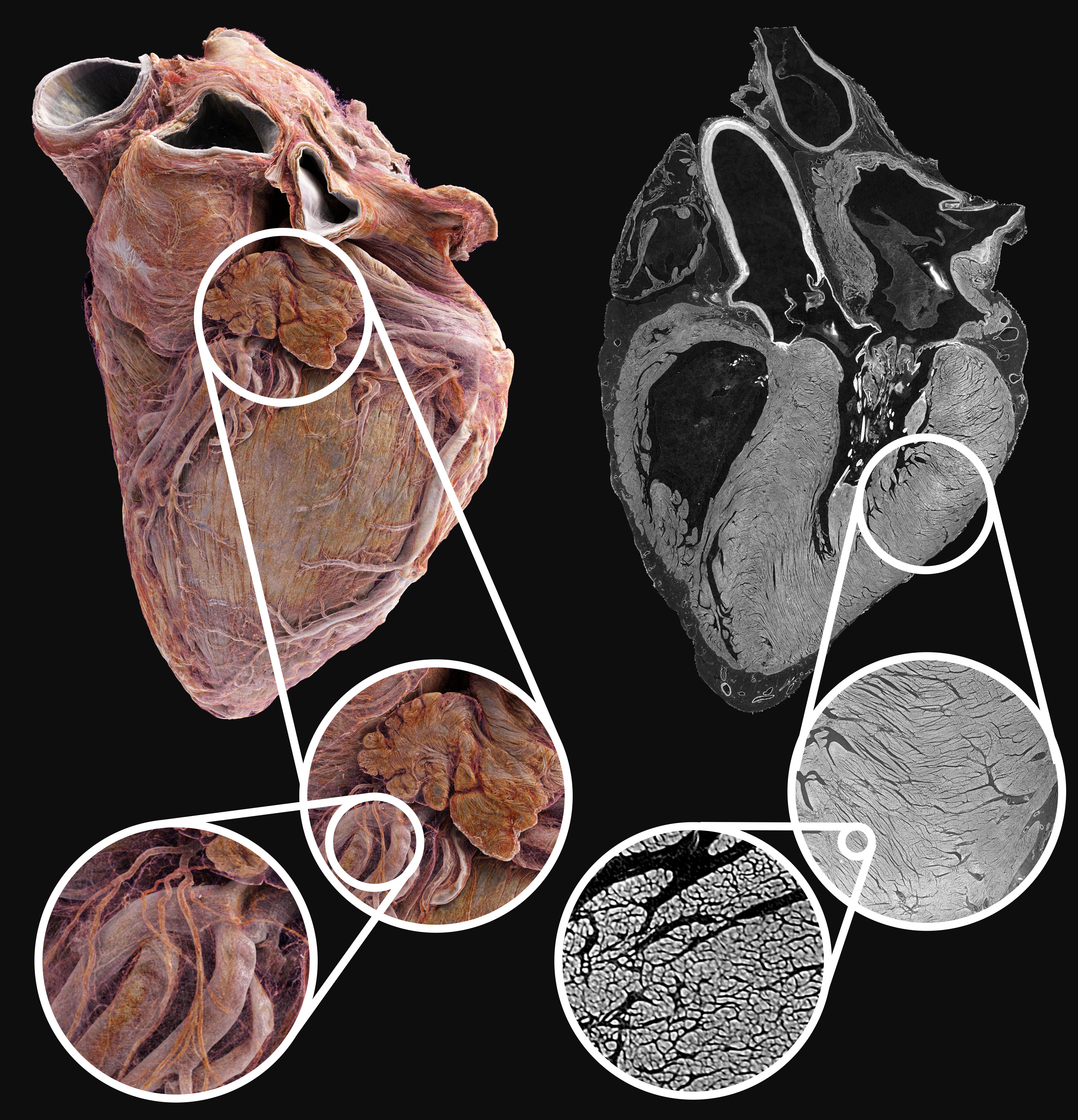The world’s first atlas of the human heart can take you inside the organ, just like Google Earth, scientists say.
Amazing technology allows viewers to observe a healthy and diseased heart in “unprecedented detail.”

6

6
Experts hope the technology will be “invaluable” in helping them better understand cardiovascular disease and “accelerate” medicine in this area.
Professor Peter Lee, lead author of the study from the Department of Mechanical Engineering at University College London (UCL), said: “The atlas we created for this study is like having Google Earth for the human heart.
“This allows us to visualize the entire organ at a global scale and then zoom in to street level to observe cardiovascular features in unprecedented detail.
“Being able to photograph entire organs like this reveals details and connections that were previously unknown.”
The study, published in the journal Radiology, provides a map of the human heart that captures the anatomical structure of the entire organ down to 20 micrometers, half the width of a human hair.
In some areas, imaging was performed at the cellular level.
It offers a 3D view of the inside of two entire adult human hearts – one healthy and one diseased.
The team hopes this will “facilitate previously impossible research on healthy and diseased hearts.”
By “clarifying the anatomical structures and connections,” they could improve treatment options for arrhythmia – an abnormality of the heart’s rhythm – and create more realistic models for surgical training, they added.
Professor Lee said: “One of the main advantages of this technique is that it provides a complete 3D view of the organ, about 25 times better than a clinical CT scan.
“Additionally, it can zoom in to the cellular level in selected areas, which is 250 times better, to get the same level of detail as we would with a microscope but without cutting the sample.”
Professor Andrew Cook, study author and cardiac anatomist at UCL’s Institute of Cardiovascular Sciences, added: “With current technology, accurate interpretation of the anatomy underlying conditions such as arrhythmia is very difficult.
“So there is enormous potential to inspire new treatments using the imaging technique we have demonstrated here.
“We believe our findings will help researchers understand how heart rhythm abnormalities arise and how effective ablation strategies are in curing them.
“For example, we now have a way to determine differences in the thickness of the layers of tissue and fat between the outer surface of the heart and the protective sac surrounding the heart, which could be relevant in treating arrhythmia.”

6

6

6

6
Cardiovascular diseases are the leading cause of death worldwide.
Ischemic heart disease, a weakening of the heart caused by reduced blood flow, was itself responsible for 8.9 million deaths, or 16% of deaths worldwide in 2019 – a figure that had increased by more than two million since 2000.
Clinicians typically use imaging techniques such as ultrasound, CT scans, and MRI to diagnose cardiovascular disease, but these do not provide detailed structural information about what is happening in an organ.
To achieve this, they have to cut the organs into thin sections to scan, which significantly limits the field of vision.
In recent years, a type of particle accelerator called a synchrotron has been used to develop new imaging techniques that overcome these limitations.
Synchrotron studies of whole fetal and small animal hearts have been published, although these have always been performed at scales much smaller than those of major adult organs.
It is the only place in the world where complete adult human organs can be viewed with such a high level of contrast.
Paul Tafforeau
In this study, scientists from UCL and the European Synchrotron Radiation Facility (ESRF) used an X-ray technique called hierarchical phase-contrast computed tomography (HiP-CT) to image two whole adult human hearts at a scale of 20 micrometres, providing a complete and detailed 3D view of the entire organ.
The detailed imaging of the cardiac conduction system, which generates and transmits the electrical signals that drive the pumping action of the heart muscle, is an example of the study’s impact on cardiovascular medicine, the authors said.
While imaging both hearts is an important step for cardiovascular medicine, the researchers added that they will need to study more hearts to understand variations between people, taking into account differences in age, sex, ethnicity and disease progression.
The two hearts were imaged at the ESRF, home to the world’s brightest X-ray source, in Grenoble, France.
One case was from a 63-year-old man with no known heart disease, and the other from an 87-year-old woman with a history of ischemic heart disease, high blood pressure, and atrial fibrillation.
It would not be possible to image the heart of a living person in this way, because the radiation dose would be too high.
BIG DATA
Dr Joseph Brunet, first author of the study, from UCL’s Department of Mechanical Engineering and a visiting researcher at the ESRF, said: “The first time you see the heart with HiP-CT it’s quite surprising because it clearly shows soft tissues that are not usually visible with conventional X-ray imaging.
“This is only possible because of the way phase-contrast X-rays interact with these tissues, as well as the high energy that ESRF can generate to penetrate the entire organ.”
This resolution is not without its challenges, however.
Imaging each core generated 10 terabytes of data, a million times more than a standard CT scan.
Paul Tafforeau, author of the ESRF study who invented the HiP-CT technique, said: “The ESRF beamline is currently the only place in the world where complete adult human organs can be imaged with such a high level of contrast, and we are still quite far from the limits of the technology.
“The main limiting factor is the processing of the very large amounts of data produced by HiP-CT.”
A showcase of the heart atlas and the technology behind it will be presented free of charge at The Wonders – part of the UCL Engineering Festival – on 19 July at the Bloomsbury Theatre in London.
How to Keep Your Heart Healthy
A healthy heart is essential for a long and healthy life.
Exercise is one of the best things you can do for your heart because it helps reduce risk factors for heart disease, including obesity, high blood pressure and stress.
The NHS recommends that adults do at least 150 minutes of moderate-intensity activity, such as brisk walking or water aerobics, or 75 minutes of vigorous-intensity exercise, such as running, each week.
But you’ll be happy to know that exercise isn’t the only proven way to ensure your heart is in tip-top shape.
From joining a book club to snacking on nuts, a cardiologist gave health journalist Lucy Gornall his top tips for keeping your heart healthy.
Dr Gosia Wamil, consultant cardiologist at Mayo Clinic Healthcare in London, said:
- BE A SOCIAL BUTTERFLY – if not for the good times, keep socializing for the health of your heart.
- TAKE A MINUTE – Mindfulness is something we associate with mental health, but there is evidence that it can also support your heart rate by controlling blood pressure.
- KEEPING YOUR LIFE GREEN – You may not feel like running or biking, but why not garden? By taking care of your plants, you are taking care of your cardiovascular health.
- VARIETY WINS – We all know we should eat five plant foods a day, but experts say we should aim to eat 30 different plant foods over a week, which includes fruits, vegetables, herbs and legumes like lentils, nuts and seeds.
- Sexy time is like working out, but a lot more fun. Sex can have a significant impact on cardiovascular health in the short and long term, experts say.
- DECAFFEINATED – Too much caffeine has a negative effect on your cardiovascular health, so try replacing it with decaffeinated beverages instead.
- LET’S GO CRAZY – Nuts may be small, but they are very good for your heart; research has shown that eating them regularly can reduce levels of inflammation linked to heart disease.